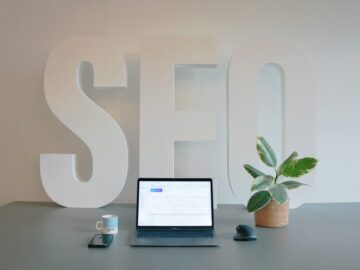In today’s fast-paced digital landscape, marketing isn’t just about creativity; it’s also about strategy. With a wealth of data at our fingertips, businesses must harness analytics to stay ahead. Imagine having the power to see not only where your customers are coming from but also what makes them tick. Harnessing the right insights can transform campaigns and drive engagement like never before. Whether you’re a small business owner or part of a large marketing team, understanding how to leverage analytics can lead you toward smarter decisions and better results. Let’s dive into how collecting and analyzing data can revolutionize your marketing efforts as well as your brand forward.
Collect and Integrate Data
The first step to effective marketing analytics is collecting data from various sources. Every interaction a customer has with your brand generates valuable insights. From website visits and social media engagement to email open rates, each piece of information can inform your strategy. Integrating this data into a single platform is crucial for clarity. Using tools like CRM systems or analytics software streamlines the process. You’ll easily access comprehensive reports that reveal trends and patterns in consumer behavior.
Analyze Customer Behavior

Understanding customer behavior is crucial for any marketing strategy. By diving into data, businesses can uncover patterns and preferences that drive purchasing decisions. Start by examining demographics. Analyze age, gender, location, and spending habits. This information gives insight into who your customers are and what they want. Next, monitor interactions across various channels. Track website visits, social media engagement, and email responses.
Evaluate Campaign Performance
Evaluating campaign performance is crucial for any marketing strategy. It allows you to understand what works and what doesn’t. Start by identifying key performance indicators (KPIs). These metrics will guide your analysis. Look at engagement rates, conversion rates, and return on investment. Each metric tells a different part of the story. Next, compare the results against your initial goals. Did you meet your targets? If not, pinpoint areas needing improvement.

Utilize Predictive Analytics
Predictive analytics transforms raw data into actionable insights. It also uses statistical algorithms and machine learning techniques to forecast future trends based on historical data. By understanding patterns in customer behavior, businesses can anticipate needs before they arise. This proactive approach allows for tailored marketing strategies that resonate with target audiences. For example, a retailer might identify seasonal buying habits. Armed with this knowledge, they can stock up on popular items ahead of time, reducing lost sales opportunities.
Leveraging analytics is essential for effective marketing strategies. By collecting and integrating data from various sources, brands can create a comprehensive view of their customers. Understanding customer behavior through detailed analysis allows marketers to tailor their efforts more precisely. As organizations continue to embrace data-driven decision-making, the potential for growth expands significantly. Adopting these practices will not only enhance marketing effectiveness but also foster stronger connections with customers over time. Embracing a culture of analytics opens up new opportunities for innovation and success in an ever-evolving marketplace.…




 A slow-loading website creates a negative user experience and reduces the chances of conversions. On the other hand, when your pages load quickly, users will love to stay engaged and explore further. This better engagement can lead to higher conversion rates as visitors are more inclined to take desired actions, including making a purchase or filling out a contact form.
A slow-loading website creates a negative user experience and reduces the chances of conversions. On the other hand, when your pages load quickly, users will love to stay engaged and explore further. This better engagement can lead to higher conversion rates as visitors are more inclined to take desired actions, including making a purchase or filling out a contact form.